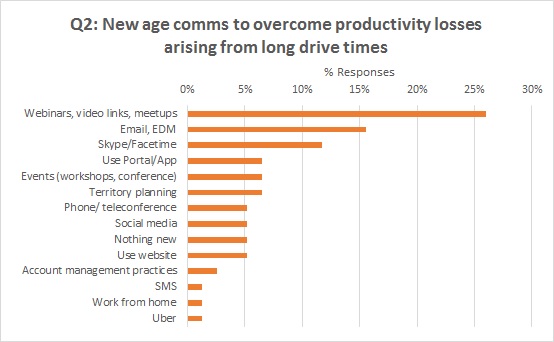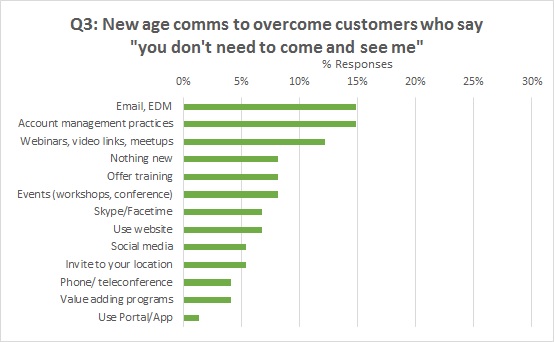A long standing client of ours asked us about this recently. Three things were bothering him in terms of productivity and cost-to-mobilise of his own sales team …
- Are there ways to rebalance our traditional reliance on the face to face visit and the phone, in order to rise above all the noise and clutter that our key customer contacts are subject to day in day out?
- Are there better ways to maintain our customer contact rate in the face of increasing traffic congestion and therefore drive times?
- Are there ways to get around the customer saying “you don’t need to come and see me this time, everything is fine at the moment”?
So we set about asking to find out. We surveyed 32 various sales and general managers from a variety of B2B sales organisations. The results are quite interesting …
Moral of the story? By all means check any of these to see if your B2B sales team would benefit from testing some of these communications methods. Simultaneously, buyer beware. Don’t let the sales team use any of these methods to undermine regular planned visit programs with top and to some extent medium tier customers. A customer saying anything like “you don’t need to come and see me this time, everything is fine at the moment” , is a very clear sign that the account manager / visit is not adding enough value. Remember it is no longer good enough as an account manager in most B2B industries these days just to be confident and competent to sell your company’s widgets and wares.
The true test of value added above and beyond selling widgets and wares is the answer to this question…what would your account managers do to command an answer like “yes please, come and visit us”, if they had no widgets and wares to sell. This of course goes to the heart of what “The trusted advisor” and “The Challenger Sales taught us.
Competitive advantage and relevance of the sales team comes from regular programmed visits extending what customers know, challenging what they think they know and teaching what they don’t know. All other newer, novel forms of communications must be a support to this bedrock.



